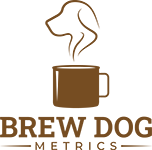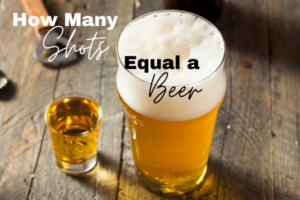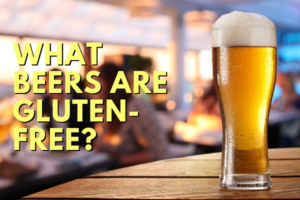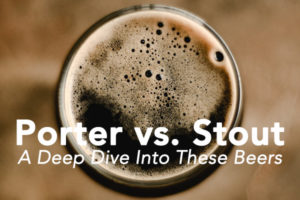With all these new fancy craft beer styles, sometimes, all a beer geek wants is to have a refreshing and crisp sip of beer. And that’s where the American classic blonde ale is always missed.
Quite a shame, though, because this summer favorite is slowly becoming hard to find these days- I mean, the real, no-nonsense light beer at least.
That’s why I thought you’d use a basic recipe or two.
But in case you’re new to the game…
…a blonde ale is also commonly referred to as a summer ale or even pale ale, thanks to its light yellow to golden color and clear appearance.
But it’s not just its appearance that’s light and approachable but its flavor, too.
That’s the reason why blonde ales are the perfect beer to give to the seasonal or even non-beer drinkers among your friends if you want to introduce them to craft beer…
…or if you just don’t want to intimidate them away from beers!
STYLE
Blonde Ales Vital Statistics
- Color Range: 3 – 6 SRM
- IBU Range: 15 – 28
- Original Gravity: 1.038 – 1.154 OG
- Final Gravity: 1.008 – 1.013 FG
- ABV Range: 3.8 – 5.5%
The classic American blonde ale style was crafted by the beer movement and is considered a starter beer.
Because it’s a starter beer, no element is made to be prominent. It’s supposed to be more approachable and casual than the typical lawnmower beer style with moderate malt and hops.
Appearance
Blonde ales’ colors range from pale yellow to deep gold.
Because of this…
…the Beer Judge Certification Program or BJCP placed this light colored beer at number 18 on the chart that’s used to categorize the different colors of beers, called Standard Reference Method…
But when talking about appearance, we don’t only talk about colors. Its clarity is also what makes this beer easily recognizable as it almost verges on brilliance.
As for its foam, it can be medium to very light, nothing full and heavy.
The opposite goes for its carbonation which can be medium to very high. Sounds refreshing!
Its head retention or how long it can keep its head foam should also be good and satisfying. Because of this, its pleasant aroma also stays even when you’re nearly finished with your glass!
Aroma
Whatever you throw in your brewer is what makes your blonde ales’ aroma.
The BJCP describes the smell of this brilliant golden ale as having a moderate down to light aroma which could also have a sweet and light malt character.
As for fruitiness…
…there should be very low to moderate fruity esters, but it’s optional. There should also be very light bready notes and sometimes a bit caramelly.
Usually- but not always- a blonde ale doesn’t have diacetyl or a butterscotch caramel aroma.
Flavor
Like the aroma, the flavor of summer ale is also the outcome of all the combinations of malts, hops, and flavorings, if there’s any, that you put in your brew.
It’s also what gives character and identity to the blonde ale style or just any beer style.
The initial flavor…
…or the taste that will greet you upon sipping your blonde ale for the first time is usually a sweet malty flavor. That could also translate as being bready, biscuity, or even a toasty wheat flavor.
Caramel flavors can either be absent or just a small hint.
As mentioned earlier…
…it’s a starter beer or a beer that you’d look for on a fine summer day, so there’s usually nothing very pronounced in its flavor profile. It’s even more subdued and restrained than the pale ale.
In other words, unlike other pale beers, the blonde ale isn’t overly bitter, with light to moderate hop flavor.
Like its aroma, its flavor doesn’t have diacetyl or a flavor that’s the same as butterscotch.
As you finish…
…the flavor that will remain in your mouth is slightly dry and a bit sweet.
Mouthfeel
The mouthfeel of the blonde ale is closely related to its flavor along with the body and texture once it’s in your mouth.
Almost everything about this beer is moderate or light
That being said, a blonde ale’s mouthfeel is light to medium, so if you’ll observe closely, it’s crisper and cleaner than other beer styles.
Due to this…
…this golden liquid feels lightly pleasurable in the mouth and goes down very smoothly and easily. That also gives this beer its wholesome summer vibe!
After going down, the aftertaste is dry but satisfying, thanks to its moderate head foam, as well.
Blonde Ale Recipe
EQUIPMENT
- Brew kettle
- Mash tun
- Long stirrer
- Immersion chiller
- Fermenting vessel
- Sanitizer
SUMMER ALE INGREDIENTS
GRAIN/ MALT BILL
To make a basic blonde ale, a suitable base grain, such as the pilsner malt, is an excellent starting point.
And to keep it light, the specialty grains should not be overpowering, thus be kept at a minimum amount.
Also…
…you can add a small amount of Vienna malt for a subtle biscuity or toasty notes. Munic malt is also a good alternative if you don’t have it.
- Pilsner malt (4 lb/ 1.8 kg)
- Maris Otter malt (4 lb/ 1.8 kg)
- Vienna malt (1 lb/ 454 g) )
- Victory malt (8 oz/ 227 g)
ALL GRAIN
Batch size: 5 gallons (19 liters)
- IBUs: 29
- ABV: 5%
- OG: 1.051
- FG: 1.013
HOPS
Because the goal is to stay away from any bitter or harsh flavors, you’d do well to opt for hops with low alpha varieties.
You can use two or three kinds of hops, but really, using just one kind is the most ideal if you’re going for that clean and crisp blonde ale.
As for the hop schedule, it could be up to you. You can do a single addition for bittering hops that’s usually at 60 minutes and then another addition for aroma that’s usually at 20 minutes.
Aside from that, you can also do dry-hopping at the end of the process if you want a more special aroma.
You can do just about anything you like.
Except for one thing.
And that is using too much hops. Remember: we’re making a pale beer for easy drinking here.
HOPS SCHEDULE
- 1 oz/ 28 grams of Tettnang [4% AA] 60 minutes remaining in the boil
- 0.5 oz/ 14 grams of Cascade [10% AA] 10 minutes remaining in the boil
- 0.5 oz/ 14 grams of Simcoe [12% AA] 10 minutes remaining in the boil
- 0.5 oz/ 14 grams of Citra at dry hop
YEAST
Yeast could be one of the following:
- Wyeast 1318 (London Ale III) yeast
- American Ale Wyeast 1056
- Danstar Nottingham
- White Labs American Ale WLP002
WATER
A seemingly simple ingredient, the taste and the quality of your beer also lie with the kind of water you use.
Most blonde ale recipes call for soft water.
Why is that?
The blonde ale is a pale kind of ale. That being said, it’s due to the fact that we don’t use dark malt for blonde ales, and as a result, it doesn’t get the acidity that’s usually provided by the dark malts.
And as you might’ve already known, you need a bit of acidity for your beer.
Don’t use alkaline water.
This is especially important if you’re making a light beer, as the effects of alkaline water is more prominent in this kind of beer.
This would require you to add even more hops, and that could damage the taste and quality of your blondie.
You also shouldn’t use hard water. The ideal water for your blonde ale recipes is soft water.
You can usually buy them in stores nearby.
Now, if you don’t have soft water…
…you can also opt to treat your hard or tap water with calcium chloride or gypsum. You can also easily browse the internet for online calculators for the water treatment of your brew.
DIRECTIONS
- Take your brewing kettle or brewery and fill it with 5 gallons of water. Heat it to 175 degrees Fahrenheit, which is a good sparge temperature.
- After that, you now have your sparge water. Transfer it to your mash tun, if you’re using a separate one, and top it up with about 3.75 grams of water and continue heating it up until you reach a mash temperature of around 150 degrees Fahrenheit.
- Now it’s time for the process of enzymic conversion. While on the heat, use your grain mill and crush your grain of choice, with the target of a mash with about 1 pound of grain to 1.5 quarts of water. The temperature should be around 150 degrees Fahrenheit and hold it there.
- When the conversion is almost done, top it up with almost boiling water while you keep on stirring or while your brewer’s circulating arm is stirring.
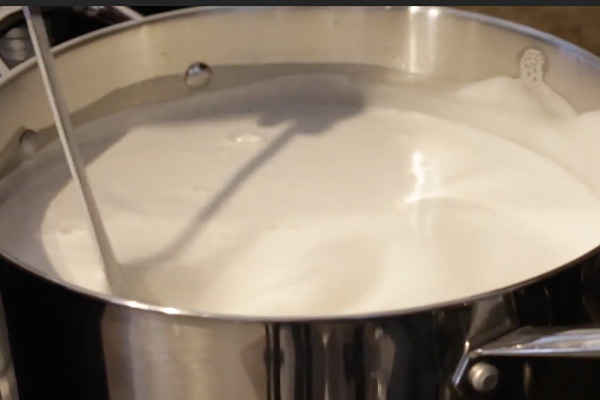
- Turn your temperature up to around 168 degrees Fahrenheit.
- Time to sparge. Do it slowly with 170 degrees Fahrenheit water until you have a volume of about 25 liters.
- Now, you boil your wort for an hour and a half.
Reminder: You may experience a hot break, or the moment when your wort foams greatly. Stirring it consistently would keep this mess from happening.
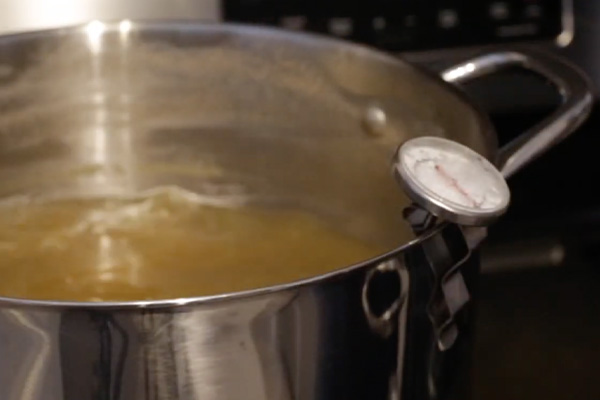
- Don’t forget to add the hops according to the hop schedule.
- After one hour and a half, it’s time to chill your worth to about 67 degrees Fahrenheit using an immersion chiller and an ice bath.
- Transfer your worth to your already sanitized primary fermenting vessel.
- Pitch your yeast. At this point, the fermenting temperature is crucial. It should be good at around 58 degrees Fahrenheit for the first 5 days and then raising it to 65 to 67 degrees Fahrenheit for the next few days or until your wort becomes clear.
- When you’re satisfied with the maturation of your beer, you can now rack it to a keg, force carbonate or condition it for carbonation. The ideal level of carbonation for me is about 2.5 volumes.
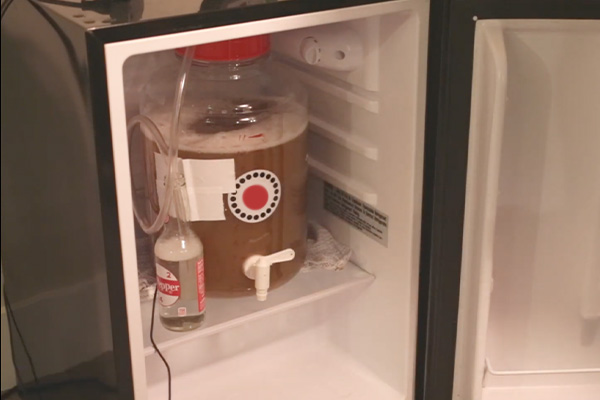
Food Pairings
This easygoing, slightly sweet and very light beer is best paired with food that are either too rich so they need balance, or equally laidback food.
To give you an idea, below are some fine examples:
- Roasted chicken
- Salad
- Spaghetti and meatballs
- Shrimp
- Cookies
- Salmon
- Pepper Jack cheese
- Pesto pasta
- Any herby food
- Grilled fish
Conclusion
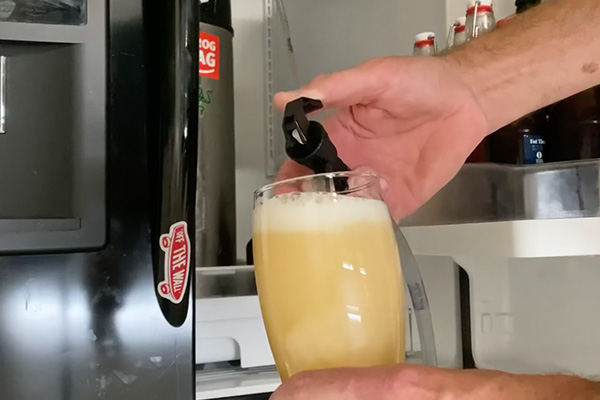
It sure is fascinating looking through all the new varieties at the Great American Beer Festival.
But after the toughest day, it’s always great to go back and chill with lighter beers, among which the blonde ale is deemed the best of them all.
The blonde ale is the perfect example of beauty in simplicity.
It may look basic with its light appearance and flavor…
…but behind this delightful finished product is a meticulous process of temperature-control and balancing of hops and malts.
And that’s what makes this great American classic more than just a lawn mowing beer.
